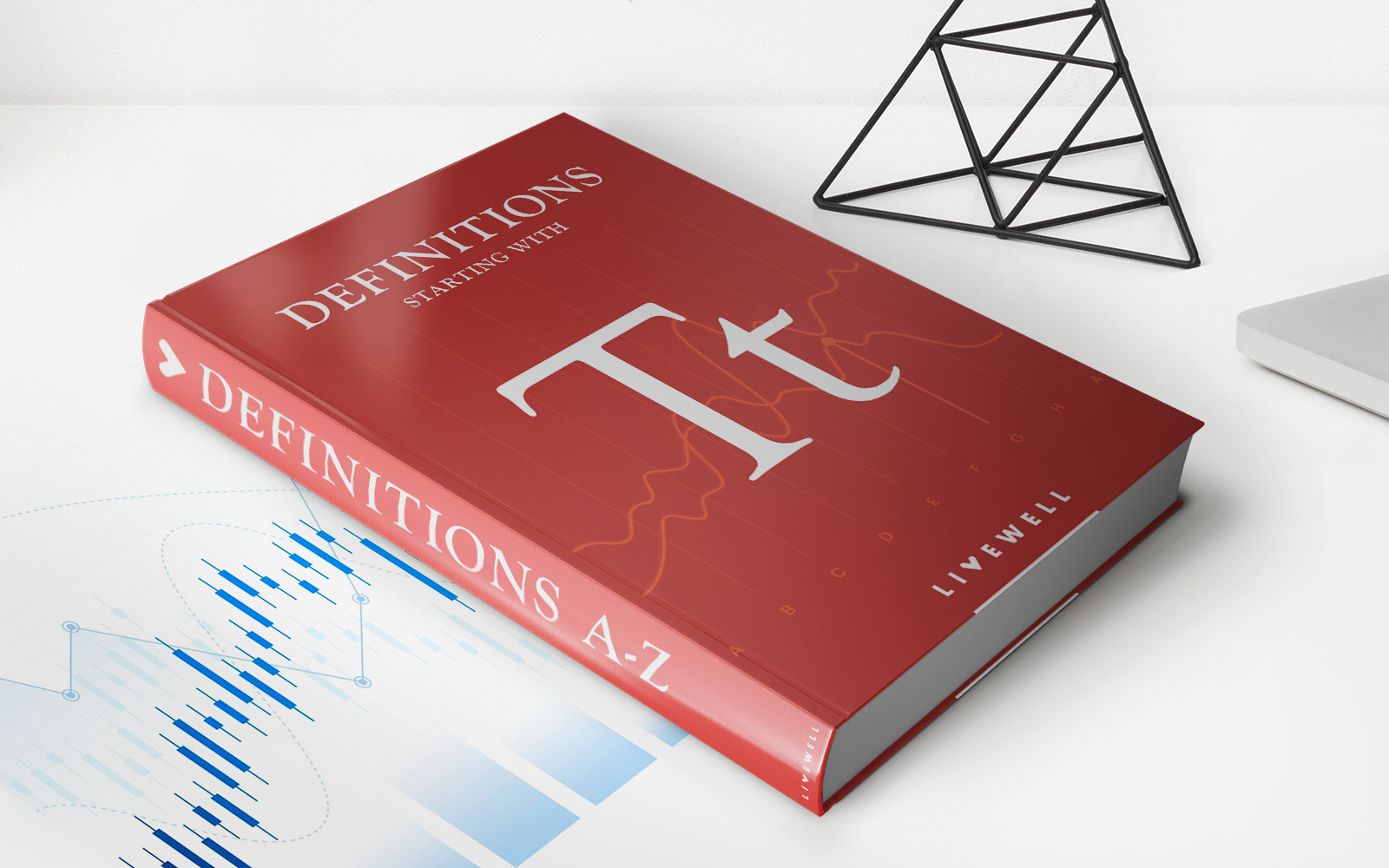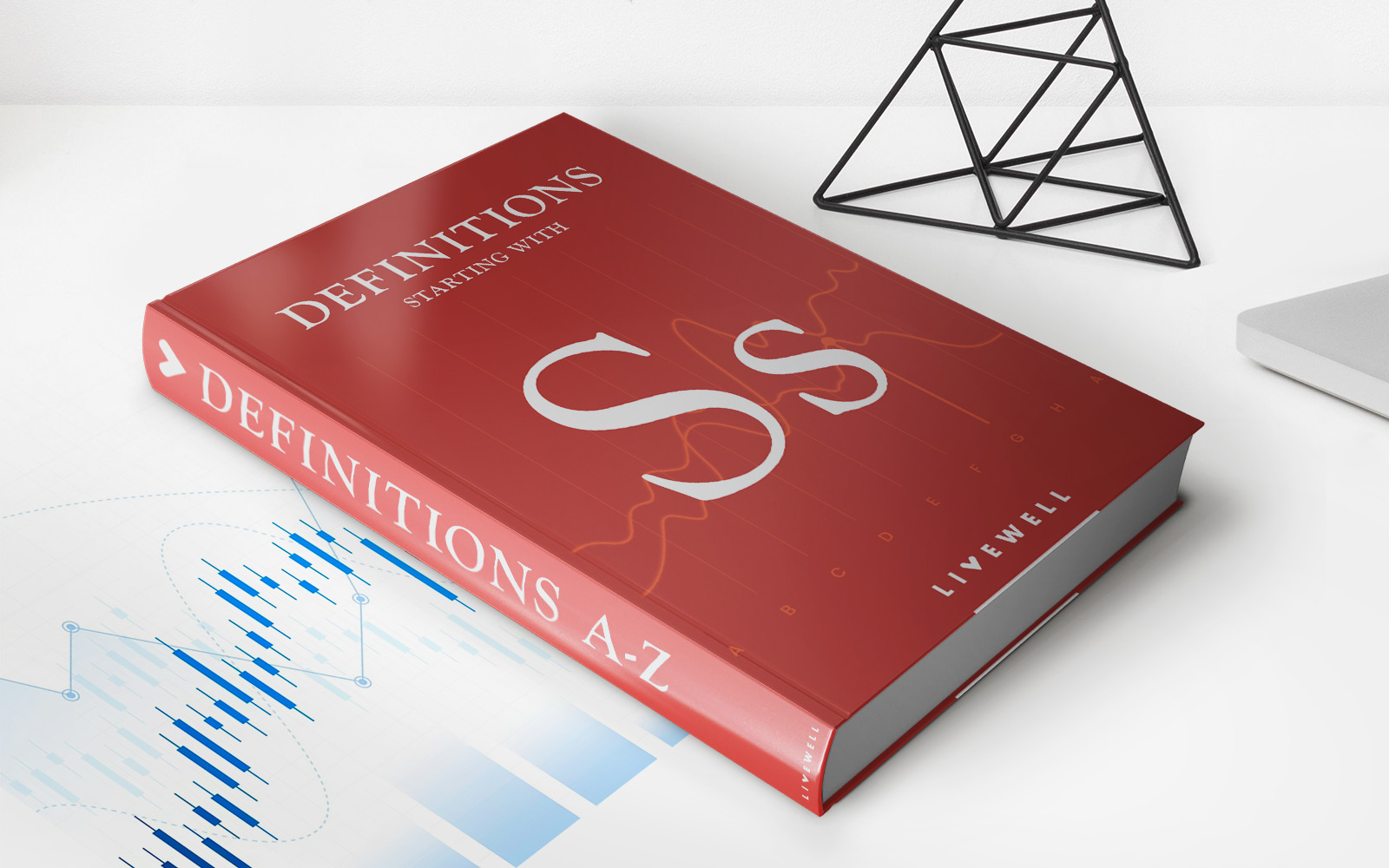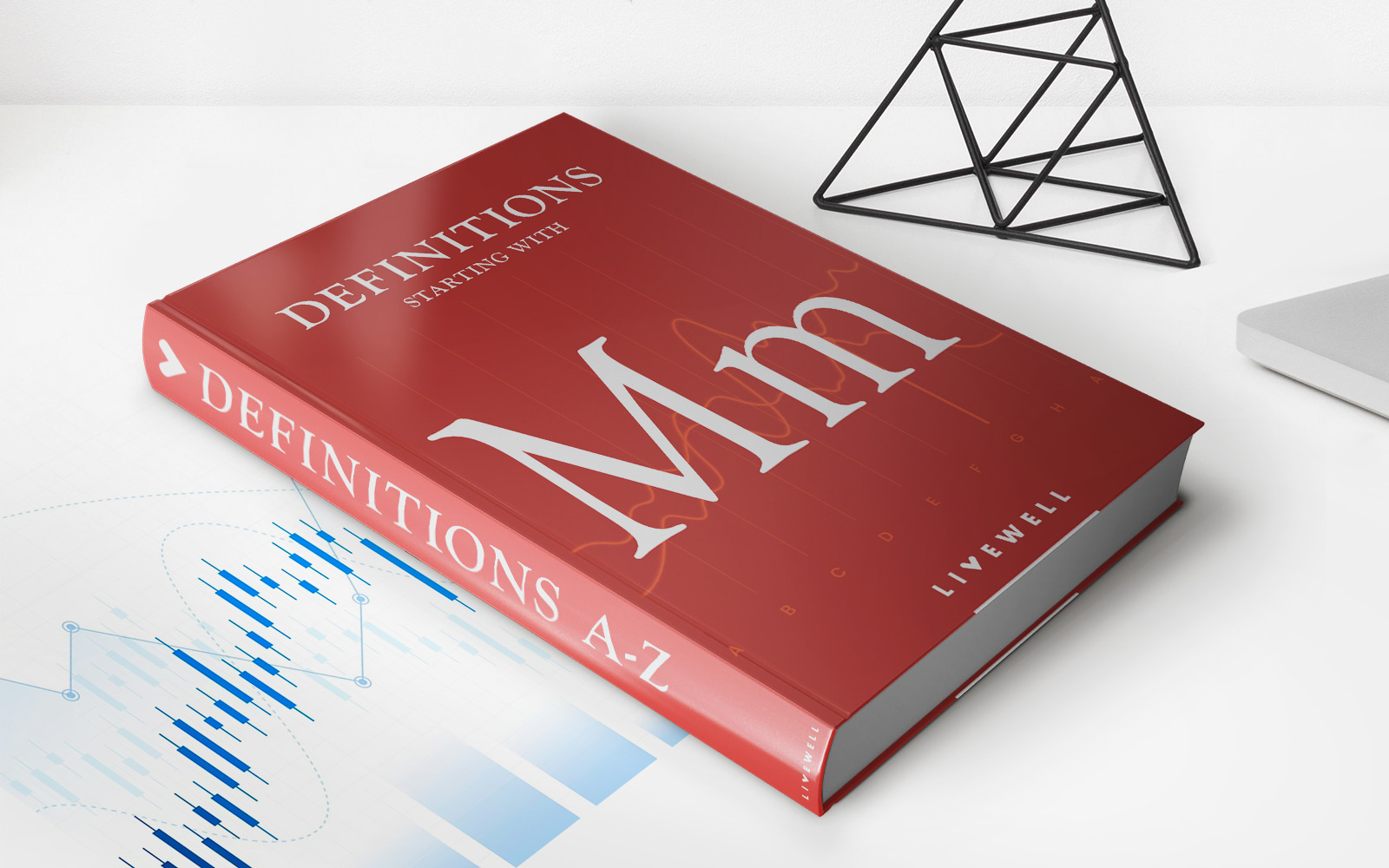Home>Finance>What Is The Difference Between Basic Life And Voluntary Life Insurance


Finance
What Is The Difference Between Basic Life And Voluntary Life Insurance
Modified: February 16, 2024
Discover the key distinctions between basic life and voluntary life insurance. Gain insights into financial protection and choose the right coverage for you.
(Many of the links in this article redirect to a specific reviewed product. Your purchase of these products through affiliate links helps to generate commission for LiveWell, at no extra cost. Learn more)
Table of Contents
- Introduction
- Definition of Basic Life Insurance
- Definition of Voluntary Life Insurance
- Coverage and Benefits of Basic Life Insurance
- Coverage and Benefits of Voluntary Life Insurance
- Premiums and Cost Differences
- Eligibility and Enrollment for Basic Life Insurance
- Eligibility and Enrollment for Voluntary Life Insurance
- Portability and Conversion Options for Basic Life Insurance
- Portability and Conversion Options for Voluntary Life Insurance
- Conclusion
Introduction
Life insurance is an essential component of a solid financial plan, offering protection and financial security to loved ones in the event of a policyholder’s death. When it comes to life insurance, there are several types to choose from, each with its own unique features and benefits. Two common types of life insurance coverage are basic life insurance and voluntary life insurance.
Understanding the difference between these two types of insurance can help individuals make informed decisions about their coverage needs. While both types provide a death benefit, they differ in terms of coverage options, costs, enrollment processes, and portability. This article will explore the differences between basic life insurance and voluntary life insurance to help individuals choose the right coverage for their specific needs.
It’s important to note that basic life insurance is typically provided by an employer as part of an employee benefits package, while voluntary life insurance is an optional coverage that employees can choose to purchase on their own. Let’s dive deeper into the definitions, coverage, benefits, costs, eligibility, and portability options for both types of life insurance.
Definition of Basic Life Insurance
Basic life insurance, also known as employer-sponsored life insurance or group life insurance, is a type of coverage provided by an employer to its employees as part of their employee benefits package. It is typically offered at no cost to the employee, with the employer paying the premiums.
Basic life insurance coverage provides a death benefit to the beneficiaries of the policyholder upon their death. The amount of coverage is usually a multiple of the employee’s annual salary, such as one or two times their salary. This coverage is usually a fixed amount and does not allow for customization or additional coverage beyond that provided by the employer.
The main advantage of basic life insurance is that it offers employees a baseline level of protection at no cost to them. It provides financial support to the employee’s loved ones in the event of their untimely death, helping to cover funeral expenses, outstanding debts, and ongoing living expenses.
It’s important to note that basic life insurance coverage is typically tied to employment. If an employee leaves their job, they may lose their coverage or have the option to convert it to an individual policy, depending on the specific terms of their employer’s insurance plan.
Employers often offer basic life insurance as a way to attract and retain employees. It provides peace of mind to employees, knowing that their loved ones will be financially protected in the event of their passing. Additionally, group insurance rates tend to be lower than individual insurance rates, making basic life insurance a cost-effective option for employees.
Definition of Voluntary Life Insurance
Voluntary life insurance, also known as supplemental life insurance or employee-paid life insurance, is a type of coverage that employees can choose to purchase on their own, in addition to any basic life insurance coverage provided by their employer. Unlike basic life insurance, voluntary life insurance requires the employee to pay the premiums.
Voluntary life insurance coverage allows individuals to customize their coverage based on their specific needs. Employees typically have the option to select a coverage amount, often in multiples of their salary, within certain limits set by the insurance provider. This flexibility allows individuals to ensure they have sufficient coverage to protect their loved ones financially in the event of their death.
One advantage of voluntary life insurance is that the coverage is not tied to employment. Even if an employee changes jobs or leaves the company, they can usually continue the coverage by paying the premiums directly to the insurance provider. This portability provides individuals with continued protection even during career transitions.
Additionally, voluntary life insurance often includes additional benefits that can enhance the overall coverage. These benefits may include options for spouse or dependent coverage, accidental death and dismemberment coverage, and the ability to purchase additional coverage at certain life events, such as marriage or the birth of a child.
The cost of voluntary life insurance can vary based on factors such as the employee’s age, health, and the amount of coverage selected. The premiums for voluntary life insurance are typically paid through payroll deductions, making it convenient for employees to manage and budget for the cost.
Employees may choose to purchase voluntary life insurance to supplement their basic life insurance coverage or if their employer does not offer basic life insurance. It provides individuals with additional financial protection and peace of mind, knowing that their loved ones will be taken care of financially in the event of their passing.
Coverage and Benefits of Basic Life Insurance
Basic life insurance coverage offers a baseline level of protection to employees, typically provided by their employer. The coverage amount is often a multiple of the employee’s annual salary, such as one or two times their salary. While the coverage amount may be limited, it still provides essential financial support to the employee’s beneficiaries in the event of their death.
The main benefit of basic life insurance is the death benefit it provides. When the policyholder passes away, the beneficiaries named in the policy will receive a lump sum payment. This money can be used to cover funeral expenses, outstanding debts, and ongoing living expenses. It provides a financial safety net for the employee’s loved ones during a difficult time.
Basic life insurance coverage is typically straightforward and easy to understand. There are no customization options or additional benefits to consider, which simplifies the decision-making process for employees. The coverage is automatic for eligible employees and is often provided at no cost to them. The employer pays the premiums, making it an attractive and cost-effective option.
Another advantage of basic life insurance is the ease of enrollment. Employees are often automatically enrolled in the coverage when they join the company, without the need to undergo medical underwriting or provide extensive documentation. This makes it accessible to a wide range of employees, regardless of their health or pre-existing conditions.
It’s important to note that basic life insurance coverage is tied to employment. If an employee leaves their job, they may lose their coverage or have the option to convert it to an individual policy, depending on the specific terms of their employer’s insurance plan. This lack of portability is a limitation compared to voluntary life insurance, which offers continued coverage even if the individual changes jobs.
Overall, basic life insurance provides essential financial protection to employees and their families, offering peace of mind and security in the event of their passing. While the coverage may be limited, it still serves as a valuable safety net for loved ones during a difficult time.
Coverage and Benefits of Voluntary Life Insurance
Voluntary life insurance coverage offers individuals the opportunity to customize their coverage based on their specific needs, in addition to any basic life insurance provided by their employer. This allows employees to have greater control over their insurance protection and ensure their loved ones are adequately covered in the event of their death.
One of the primary benefits of voluntary life insurance is the ability to choose the coverage amount. Employees can typically select a coverage amount that suits their individual circumstances, often based on a multiple of their salary. This flexibility ensures that individuals can tailor their coverage to meet their family’s financial needs, such as paying off debts, covering daily living expenses, or providing for their children’s education.
Voluntary life insurance also often includes options for spouse or dependent coverage. This allows employees to extend the coverage to their family members, ensuring that their loved ones are protected in the event of their spouse or child’s untimely passing. This additional coverage offers peace of mind and provides financial support during a challenging time.
Another advantage of voluntary life insurance is the inclusion of riders or additional benefits. These can enhance the overall coverage and provide additional financial protection. Common riders may include accidental death and dismemberment coverage, which pays out an additional benefit if the policyholder dies or suffers a covered accident resulting in the loss of a limb or major bodily function. Some policies also offer the option to purchase additional coverage at certain life events, such as marriage or the birth of a child, without the need for further medical underwriting.
Voluntary life insurance is also portable, meaning that coverage can continue even if an employee changes jobs or leaves their current employer. This portability offers individuals peace of mind, knowing that they can maintain their coverage regardless of career transitions. It eliminates the need to reapply for coverage or undergo the underwriting process again, ensuring continuous protection from the policy.
Although employees are responsible for paying the premiums for voluntary life insurance coverage, the cost is often competitive and affordable. Premiums are typically paid through payroll deductions, making it convenient for employees to manage the cost and ensure continuous coverage.
Overall, voluntary life insurance provides individuals with the opportunity to personalize their coverage and ensure their loved ones are well protected. The ability to customize coverage amounts, include spouse and dependent coverage, and take advantage of additional benefits and portability make voluntary life insurance a valuable option for individuals seeking comprehensive and flexible life insurance protection.
Premiums and Cost Differences
When comparing basic life insurance and voluntary life insurance, one of the key factors to consider is the premiums and cost differences between the two types of coverage.
In the case of basic life insurance, the premiums are typically paid by the employer. This means that employees do not have to make direct contributions from their own income to maintain the coverage. The cost of basic life insurance is often included as part of an employee’s benefits package, making it a cost-effective option for individuals.
On the other hand, with voluntary life insurance, the premiums are paid by the employee. The cost of premiums can vary based on factors such as the individual’s age, health, and the coverage amount selected. Employees usually pay the premiums through payroll deductions, making it convenient and easy to manage. The cost of voluntary life insurance coverage is an important consideration for individuals, as it directly affects their monthly budget and overall affordability.
It’s important to note that voluntary life insurance premiums are not tax-deductible, unlike some other types of insurance such as health insurance or long-term care insurance. However, the death benefit received by the beneficiaries is usually tax-free, providing financial support without the burden of taxes.
The cost differences between basic life insurance and voluntary life insurance can vary depending on several factors. Basic life insurance is often provided at no cost to employees, as the employer pays the premiums. This makes it an attractive option for employees, as they receive a baseline level of coverage without any out-of-pocket expenses.
On the other hand, since voluntary life insurance requires employees to pay the premiums themselves, the cost can vary depending on the individual’s age, health, and the coverage amount chosen. Premiums for voluntary life insurance coverage may be higher compared to basic life insurance due to the additional benefits and customization options available.
Employees should carefully evaluate their budget and coverage needs when considering the cost differences between basic life insurance and voluntary life insurance. It’s important to assess the financial impact of the premiums on their overall monthly expenses and ensure that the coverage amount selected meets their specific needs.
Ultimately, the choice between basic life insurance and voluntary life insurance will depend on an individual’s unique circumstances, budget, and coverage requirements. Understanding the premiums and cost differences can help individuals make an informed decision that aligns with their financial goals and provides the necessary protection for their loved ones.
Eligibility and Enrollment for Basic Life Insurance
Basic life insurance is typically offered as part of an employee benefits package, and eligibility and enrollment processes may vary depending on the employer’s policies. Here is a general overview of the typical eligibility criteria and enrollment procedures for basic life insurance coverage:
Eligibility: Most employers provide basic life insurance coverage to their employees as a standard benefit. Eligibility is often based on factors such as employment status, hours worked, and length of service. Full-time employees are typically eligible for basic life insurance, while part-time employees may have specific eligibility requirements based on their work schedule. Some employers may offer basic life insurance to all employees, regardless of their employment status.
Automatic Enrollment: In many cases, eligible employees are automatically enrolled in basic life insurance coverage without the need for additional actions on their part. This means that upon meeting the eligibility criteria, employees are automatically included in the insurance plan and enjoy the provided coverage amount. Automatic enrollment ensures that employees have the basic protection without the need for extensive paperwork or decision-making.
Beneficiary Designation: During the enrollment process, employees are often asked to designate beneficiaries for their basic life insurance policy. Beneficiaries are the individuals who will receive the death benefit in the event of the employee’s passing. Employers typically provide forms or online platforms where employees can specify their chosen beneficiaries. It’s important to regularly review and update beneficiary designations to ensure they align with an individual’s current wishes and circumstances.
Changes and Updates: Employees may have the opportunity to make changes or updates to their basic life insurance coverage during specific enrollment periods, such as open enrollment. These enrollment periods typically occur annually and provide employees the chance to adjust their coverage level or designate new beneficiaries. Outside of these enrollment periods, changes to basic life insurance coverage may only be allowed due to qualifying life events, such as marriage, divorce, or the birth of a child.
It’s important for employees to familiarize themselves with their employer’s specific eligibility and enrollment procedures for basic life insurance. This information is typically provided through employee handbooks, benefits communications, or company intranet portals. Employees should reach out to their HR department or benefits administrator for any questions or concerns related to eligibility and enrollment for basic life insurance.
By understanding the eligibility criteria and enrollment procedures, employees can ensure they take full advantage of the basic life insurance coverage offered by their employer and provide essential financial protection for their loved ones.
Eligibility and Enrollment for Voluntary Life Insurance
Voluntary life insurance is an optional coverage that employees can choose to purchase on their own, in addition to any basic life insurance provided by their employer. Eligibility and enrollment processes for voluntary life insurance may vary depending on the insurance provider and the specific policies offered. Here is a general overview of the typical eligibility criteria and enrollment procedures for voluntary life insurance coverage:
Eligibility: In most cases, employees who are eligible for basic life insurance coverage through their employer are also eligible for voluntary life insurance. However, eligibility may vary based on factors such as employment status, hours worked, and length of service. It’s important for employees to review the specific eligibility requirements set by their employer and insurance provider.
Enrollment Options: During specific enrollment periods, such as open enrollment or upon hire, employees are typically given the opportunity to enroll in voluntary life insurance coverage. Enrollment options may include selecting a coverage amount, choosing additional benefits or riders, and designating beneficiaries.
Medical Underwriting: Depending on the coverage amount requested, employees may be required to undergo medical underwriting before being approved for voluntary life insurance. Medical underwriting involves providing information about an individual’s medical history, current health status, and possibly undergoing a medical examination. The insurance provider will assess the individual’s overall health to determine the level of risk and appropriate premium rates.
Portability: One of the advantages of voluntary life insurance is its portability. Unlike basic life insurance, voluntary life insurance coverage can typically be maintained even if an employee changes jobs or leaves their current employer. This means that as long as the premiums continue to be paid, individuals can retain their coverage and the associated benefits. It’s important to check the specific portability options and requirements set by the insurance provider.
Changes and Updates: Similar to basic life insurance, employees may have the opportunity to make changes or updates to their voluntary life insurance coverage during specific enrollment periods, such as open enrollment. These enrollment periods provide employees with the chance to adjust their coverage amount, add or remove additional riders, or update beneficiary designations. Outside of these enrollment periods, changes to voluntary life insurance coverage may only be allowed due to qualifying life events, such as marriage, divorce, or the birth of a child.
Employees should consult with their employer’s benefits department or insurance provider to understand the eligibility criteria and enrollment procedures for voluntary life insurance. It’s important to carefully review the coverage options, premiums, and associated benefits before making a decision. By understanding the eligibility and enrollment process, employees can make informed choices about their voluntary life insurance coverage to provide additional financial protection for themselves and their loved ones.
Portability and Conversion Options for Basic Life Insurance
Basic life insurance coverage provided by an employer is typically tied to employment, which means that employees may have limited portability options if they leave their job or retire. However, some basic life insurance policies do offer the ability to retain coverage through portability or conversion options. Here is an overview of the typical portability and conversion options for basic life insurance:
Portability: Some basic life insurance policies offer portability, allowing employees to continue their coverage even after leaving their job. Portability allows individuals to maintain the same coverage and death benefit, but the responsibility for paying the premiums shifts from the employer to the policyholder. Typically, portability options must be elected within a specified timeframe after leaving employment, so it’s essential to review the terms and conditions of the insurance policy to understand the portability provisions.
Conversion: In cases where portability is not available, basic life insurance policies may offer conversion options. Conversion allows individuals to convert their group life insurance policy into an individual whole life or term life insurance policy. The converted policy is not tied to employment and provides continued coverage without the need for medical underwriting. Conversion options may have specific limitations, such as a deadline for conversion or a maximum coverage amount that can be converted. It’s important to consult the policy terms to understand the conversion options and associated costs.
Cost Considerations: It’s important to note that portability and conversion options for basic life insurance may come with changes in premiums. When coverage shifts from an employer-paid policy to an individual-paid policy, the policyholder is responsible for the full cost of the premiums. The premiums for individual life insurance policies are often higher than those for group life insurance due to differences in underwriting and risk assessment. When considering portability or conversion options, it’s essential to evaluate the financial implications and determine if the continued coverage is affordable and aligns with personal needs.
Deadline and Eligibility: Both portability and conversion options for basic life insurance typically have deadlines and eligibility requirements. These requirements may vary depending on the insurance provider and the specific policy. It’s crucial for individuals to review the policy documents, contact the insurance provider, or consult with a financial advisor to understand the processes, deadlines, and eligibility criteria for portability or conversion.
Employees with basic life insurance coverage should carefully review the terms and conditions of their policy to understand the portability and conversion options available to them. If portability is an option, it provides individuals with the opportunity to maintain their coverage without interruption. If portability is not available, conversion options can still provide a pathway to continued coverage. By exploring these options, individuals can make informed decisions about retaining and transitioning their basic life insurance coverage when leaving their job or retiring.
Portability and Conversion Options for Voluntary Life Insurance
Voluntary life insurance coverage often offers portability and conversion options that provide individuals with flexibility and continued coverage even after leaving their job or retiring. Here is an overview of the typical portability and conversion options for voluntary life insurance:
Portability: Portability is a common feature of voluntary life insurance, allowing policyholders to retain their coverage even if they change jobs or leave their current employer. Portability provides the option to continue the same coverage and death benefit, although the responsibility for paying the premiums shifts from the employer to the policyholder. Portability ensures a seamless transition and ongoing financial protection for the policyholder and their beneficiaries. Like other policy features, the specific terms and conditions of portability will depend on the insurance provider and the policy itself. It’s important to review the policy documents and consult with the insurance provider to understand eligibility criteria, deadlines, and any associated costs.
Conversion: Conversion is another option for individuals with voluntary life insurance coverage who may no longer be eligible for portability. Conversion allows policyholders to convert their voluntary life insurance policy into an individual whole life or term life insurance policy. Conversion options usually do not require medical underwriting, making it a valuable choice for individuals who want to maintain coverage but are no longer eligible for the group policy. The converted policy becomes an individual policy, not tied to employment, and offers continued coverage and death benefits. Similar to portability, the conversion provisions, deadlines, and potential limitations will depend on the insurance provider and the policy terms. It’s crucial to review the policy documents and speak with the insurance provider to understand the conversion options and any associated costs.
Cost Considerations: It’s important to note that portability and conversion options for voluntary life insurance may come with changes in premiums. When transitioning to an individual policy, the policyholder becomes responsible for paying the full premium amount. The premiums for individual life insurance policies generally differ from group policies due to varying factors such as risk assessment and underwriting practices. When considering portability or conversion, individuals should evaluate the financial implications and ensure that the continued coverage is affordable and aligns with their personal needs.
Deadline and Eligibility: Both portability and conversion options for voluntary life insurance typically have specific deadlines and eligibility requirements. These requirements may differ based on the insurance provider and the terms of the policy. It’s crucial for individuals to review the policy documents, contact the insurance provider, or consult with a financial advisor to understand the processes, deadlines, and eligibility criteria for portability or conversion.
Individuals with voluntary life insurance coverage should understand the portability and conversion options available to them. Portability allows for seamless coverage continuation when transitioning jobs, while conversion offers a pathway to maintain coverage when portability is not an option. By exploring these options, individuals can make informed decisions about maintaining their voluntary life insurance coverage and ensuring ongoing financial protection.
Conclusion
Both basic life insurance and voluntary life insurance serve as important components of a comprehensive financial plan, offering protection and financial security to loved ones in the event of the policyholder’s death. However, there are key differences between the two types of coverage that individuals should consider when evaluating their needs and making decisions about life insurance.
Basic life insurance, often provided by an employer as part of the employee benefits package, offers a baseline level of coverage with no cost to the employee. It provides financial support to the employee’s loved ones in the event of their passing, helping to cover funeral expenses, outstanding debts, and ongoing living expenses. While the coverage amount may be limited, basic life insurance provides essential financial protection at no additional cost to the employee.
Voluntary life insurance, on the other hand, is optional coverage that employees can choose to purchase in addition to any basic life insurance provided by their employer. It provides individuals with the flexibility to customize their coverage amount, add additional benefits like accidental death and dismemberment coverage, and extend coverage to their spouse or dependents. Voluntary life insurance also offers portability and conversion options, allowing individuals to maintain coverage even if they change jobs or retire.
When it comes to premiums and costs, basic life insurance is typically paid for by the employer, whereas voluntary life insurance requires employees to pay the premiums themselves. The cost of voluntary life insurance can vary based on factors such as age, health, and coverage amount selected. It’s important for individuals to evaluate their budget and coverage needs when considering the cost differences between basic and voluntary life insurance.
In conclusion, choosing between basic life insurance and voluntary life insurance depends on an individual’s specific circumstances and preferences. Basic life insurance provides essential coverage at no cost to the employee, while voluntary life insurance offers additional flexibility and customization options. Evaluating eligibility, coverage, costs, and portability or conversion options will help individuals determine the right type of life insurance to meet their unique financial protection needs.
Regardless of the type of life insurance chosen, the important thing is to have adequate coverage in place to provide financial security for loved ones. It is recommended to consult with insurance professionals or financial advisors to assess individual needs and make informed decisions about life insurance coverage.














